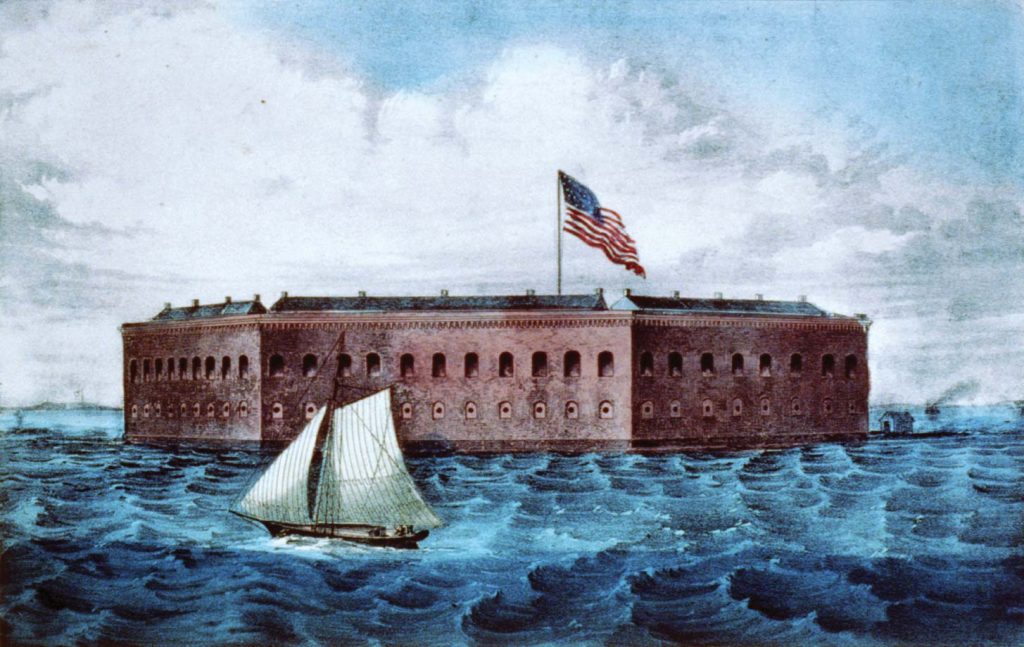There are many interesting facts about Charleston’s National Parks. Below are just a few that are part of the fabric of the historic legacy of the Lowcountry:
- Edgar Allen Poe was stationed at Fort Moultrie between 1827 – 1828. Later in life, he wrote the short story The Gold Bug based on his time at the fort and on Sullivan’s Island.
- The South Carolina state flag traces its origins to the Battle of Sullivan’s Island during the American Revolution on June 28, 1776.
- Fort Sumter sits on a man-made island that took over 10 years to build. Ships from New England brought down granite and rock used to make the island’s foundation.
- Confederate forces from Fort Johnson fired the first shots of the American Civil War Fort Sumter, which was occupied by United States troops, on April 12, 1861.
- Fort Moultrie and Fort Sumter were both active forts through World War II. Both were decommissioned in 1947.
- Fort Sumter is named after the Revolutionary War General Thomas Sumter, who is also known as the “Gamecock.”
- The Charleston Light on Sullivan’s Island was the last major lighthouse built by the federal government in 1962. Its three-sided design can withstand winds of up to 125 mph.
- At the invitation of Charles Pinckney, George Washington stopped and enjoyed breakfast at Snee Farm on May 2, 1791. While Charles Pinckney was not there, General William Moultrie was.
- No structures from Charles Pinckney’s time remain at the Charles Pinckney National Historic Site, but archaeologists discovered the foundation for a house directly beneath the existing house.
- Charles Pinckney won his first election at age 21 in Christ Church Parish with a whopping two votes, including his own.
Charleston is the perfect backdrop for exploring the natural world around you, and having fun while you do it! Want to find out more about Charleston? Contact THE BRENNAMAN GROUP: 843.345.6074 – bob@charlestonproperty.net – http://BrennamanGroup.com

(Credit: Britannica)